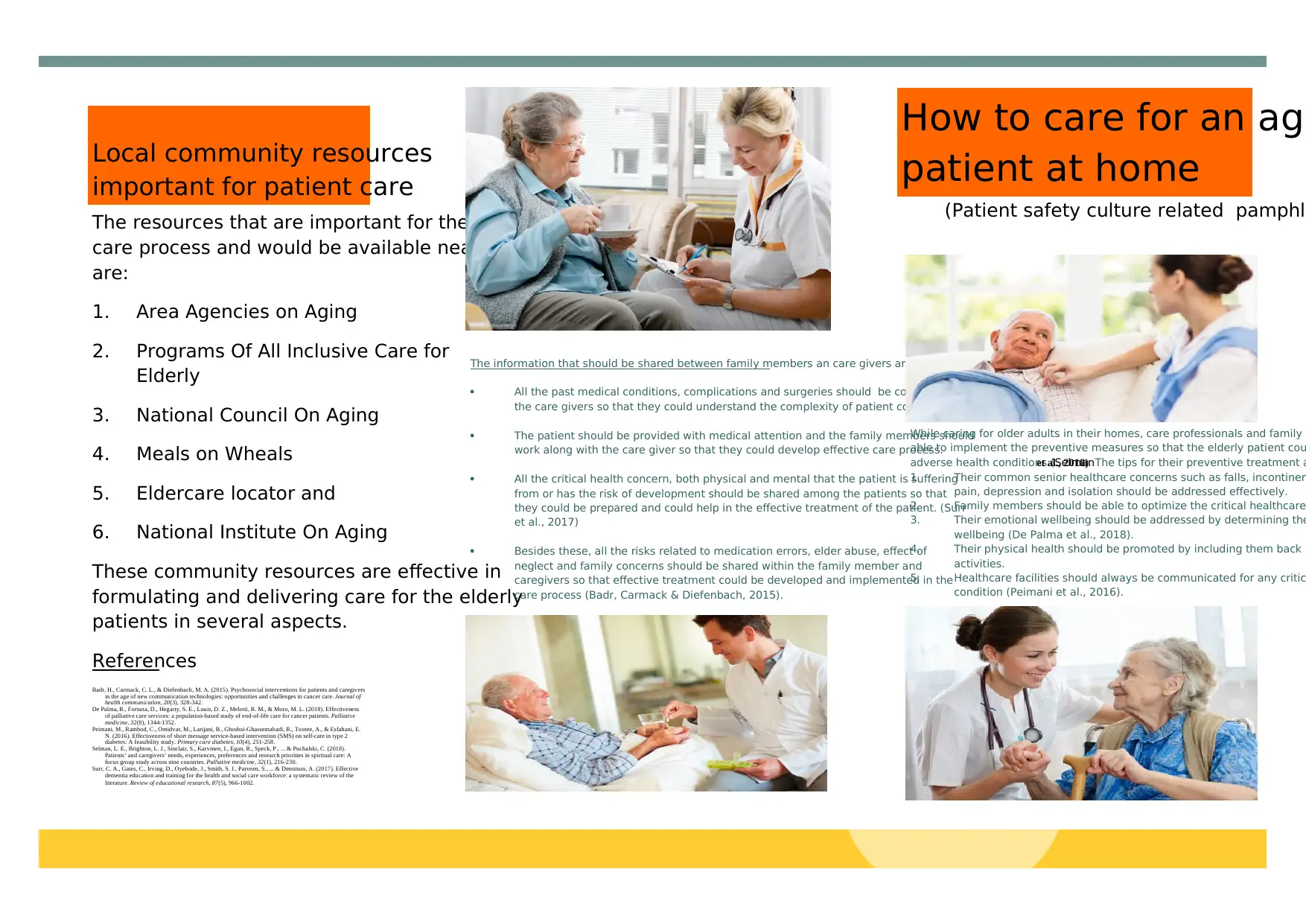NURS 320: Patient Safety Culture - Aging Patient Home Care Pamphlet
VerifiedAdded on 2022/10/11
|1
|734
|19
Practical Assignment
AI Summary
This assignment is a patient safety culture pamphlet designed to educate clients on the home care of aging adults. The pamphlet covers essential aspects of patient care, including preventive measures, information sharing between family members and caregivers, and local community resources. It provides five tips for preventive care, addressing common senior healthcare concerns such as falls, incontinence, dementia, pain, depression, and isolation. The pamphlet also emphasizes the importance of optimizing critical healthcare conditions, promoting emotional and physical well-being, and maintaining communication with healthcare facilities. It highlights the significance of sharing past medical conditions, critical health concerns, and potential risks with caregivers to ensure effective treatment. The pamphlet includes references in APA format, ensuring the information is up-to-date and evidence-based. The goal is to provide a comprehensive guide for safe and effective home care for aging patients, incorporating patient safety culture principles.






![[object Object]](/_next/static/media/star-bottom.7253800d.svg)